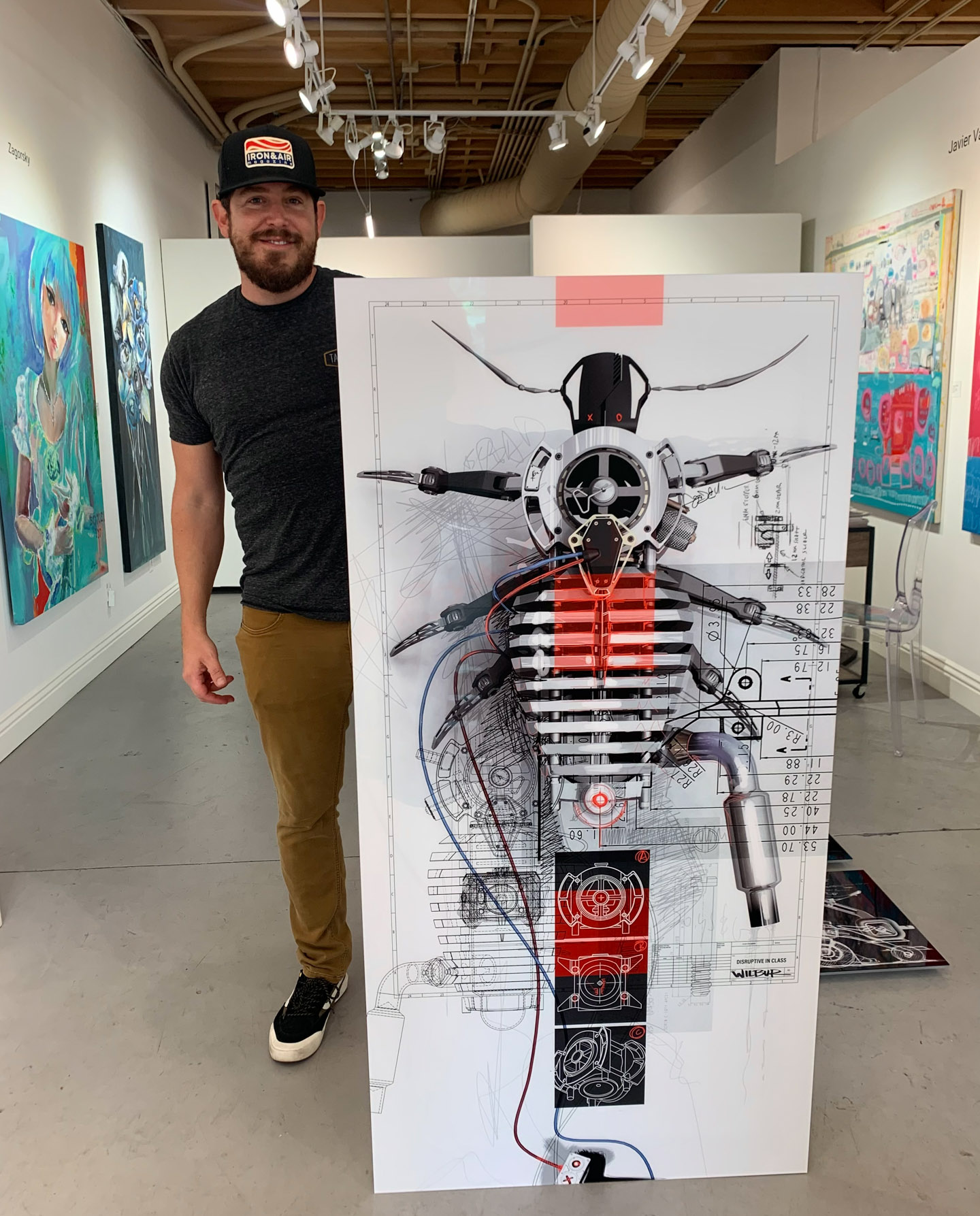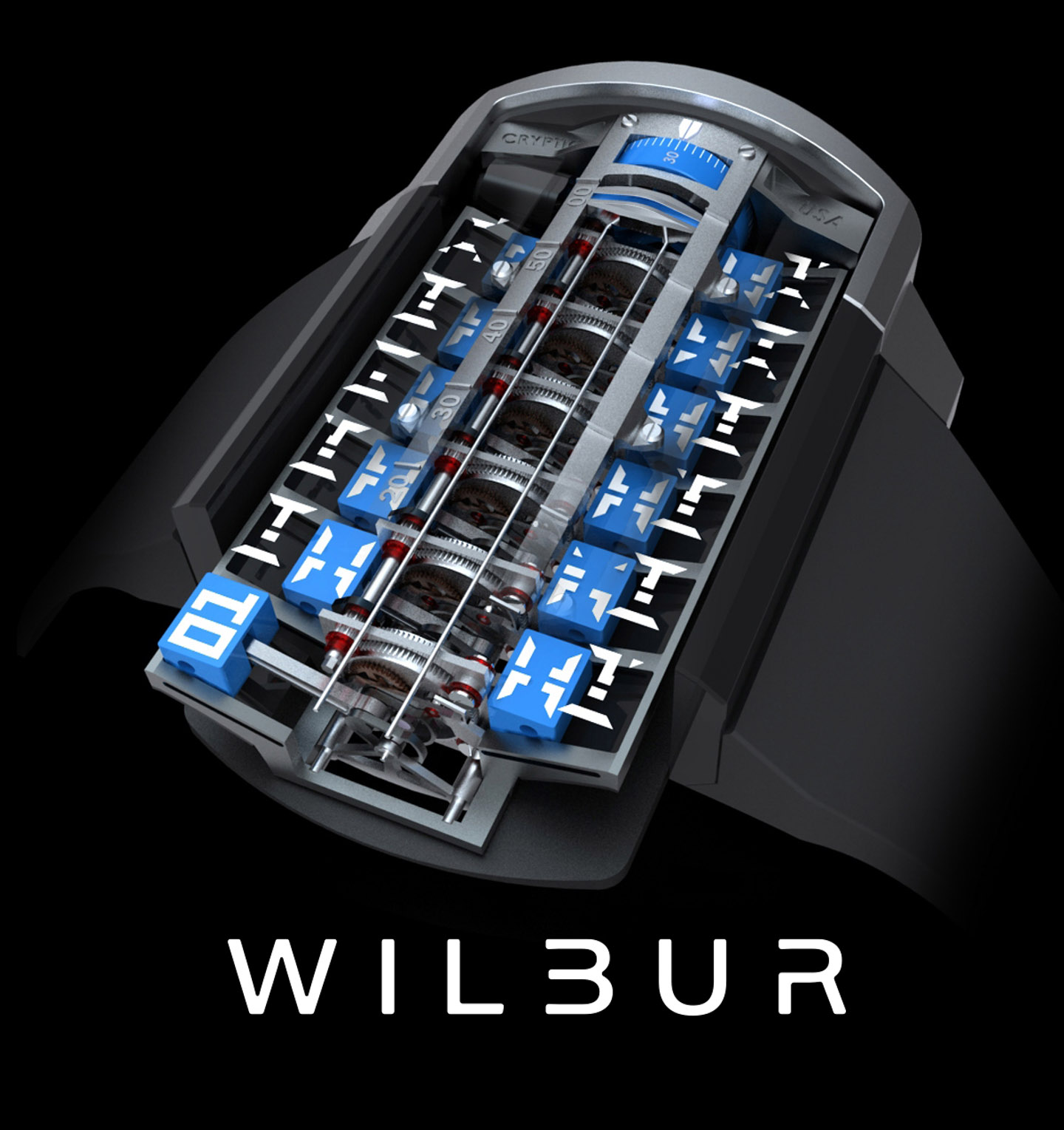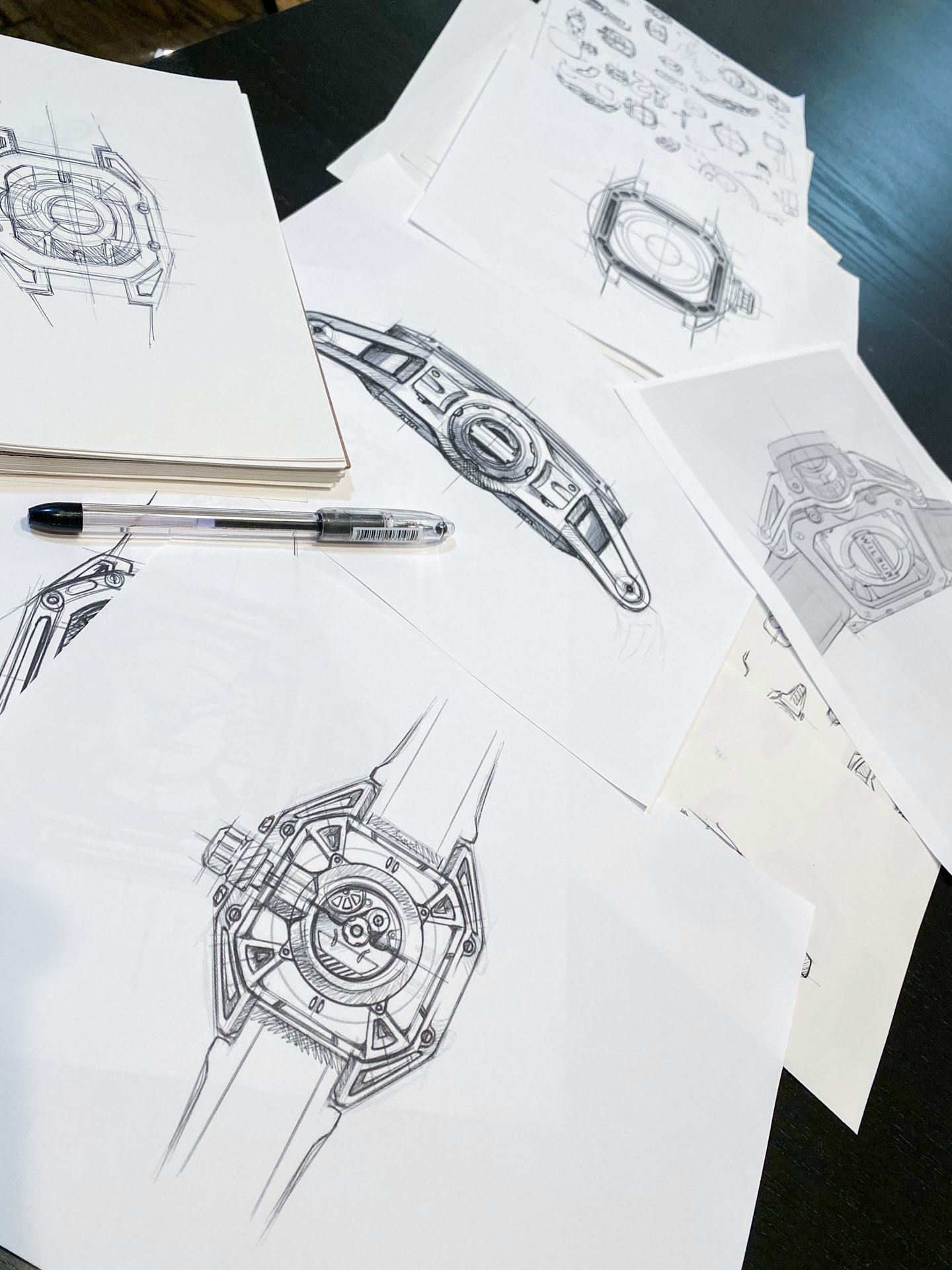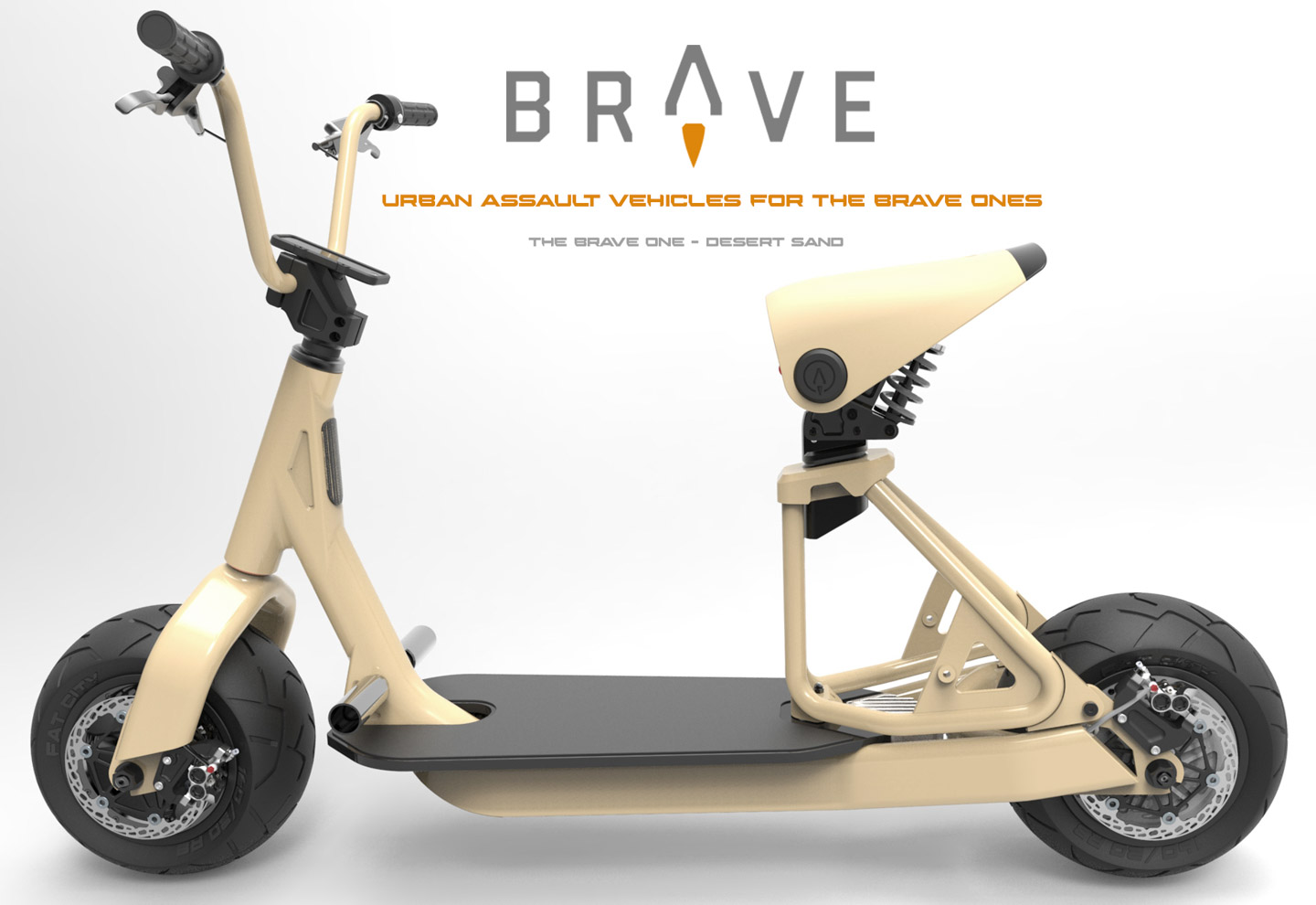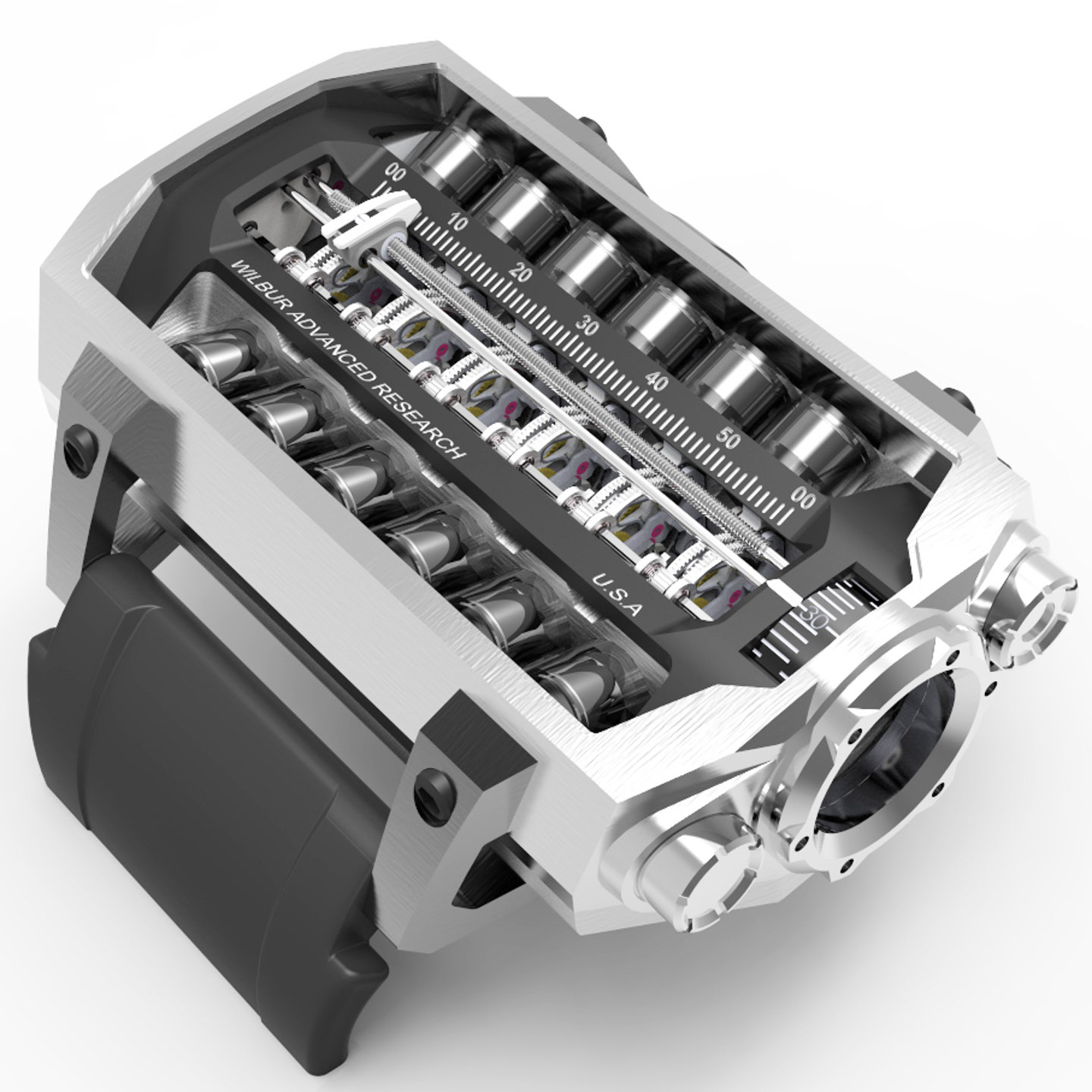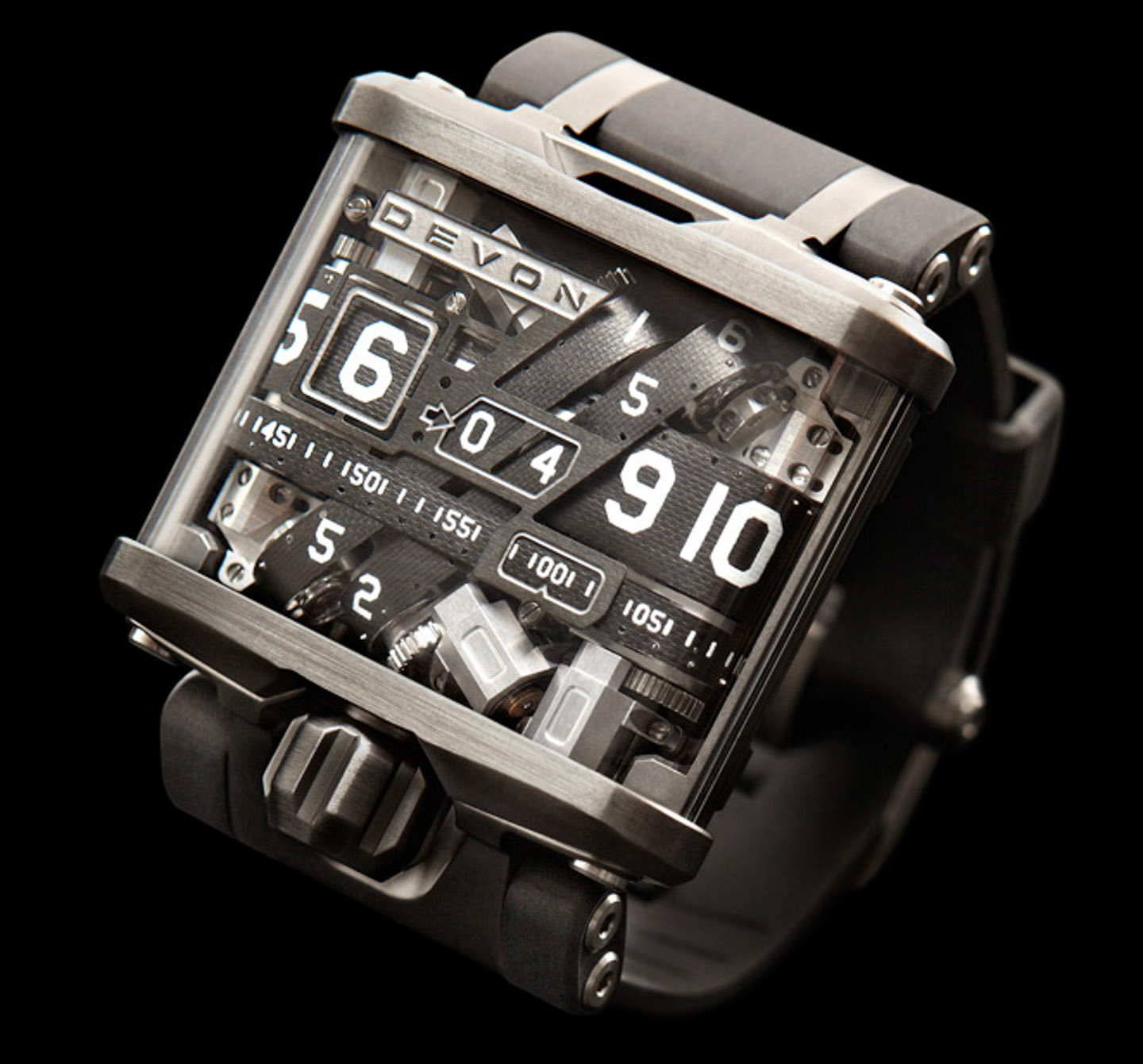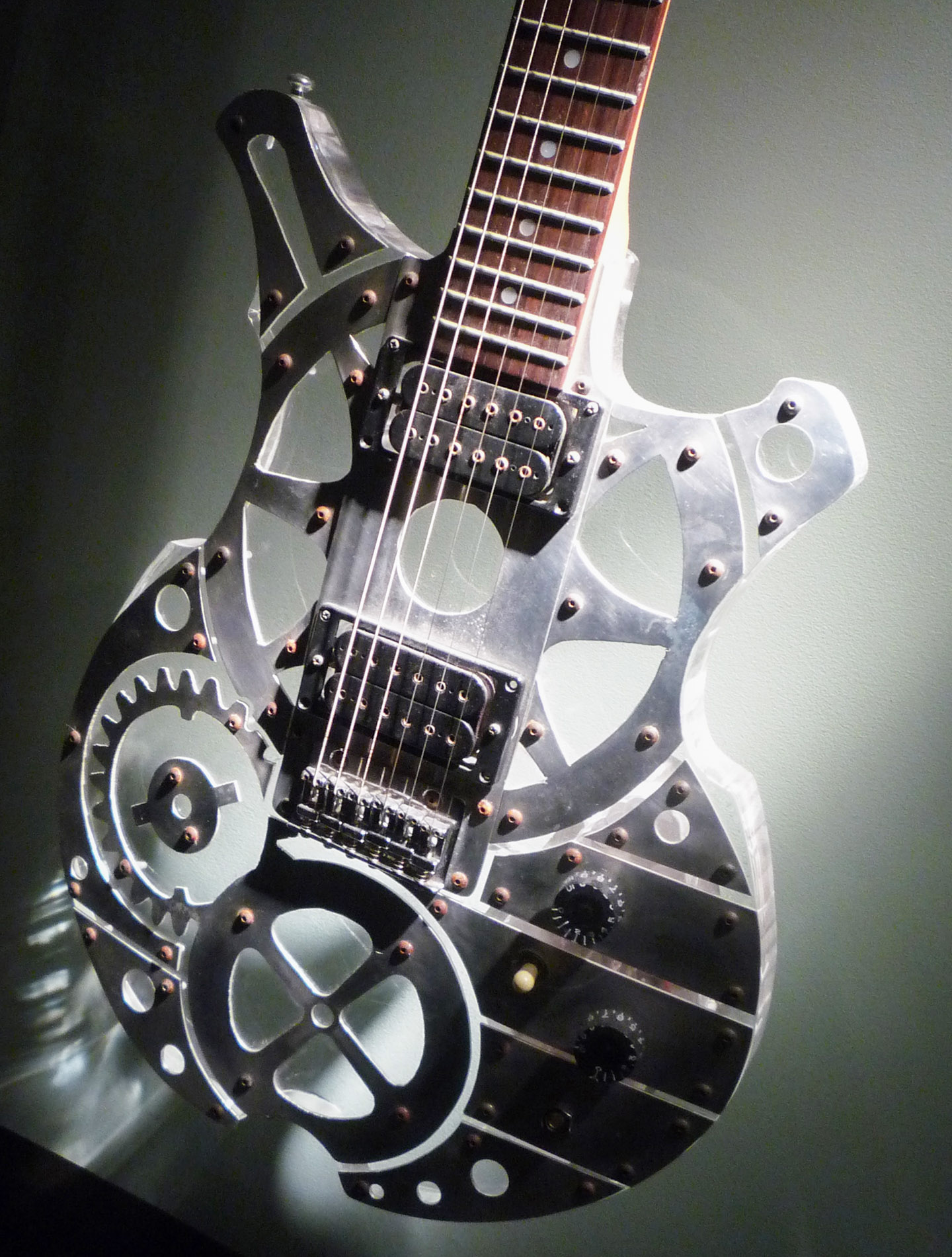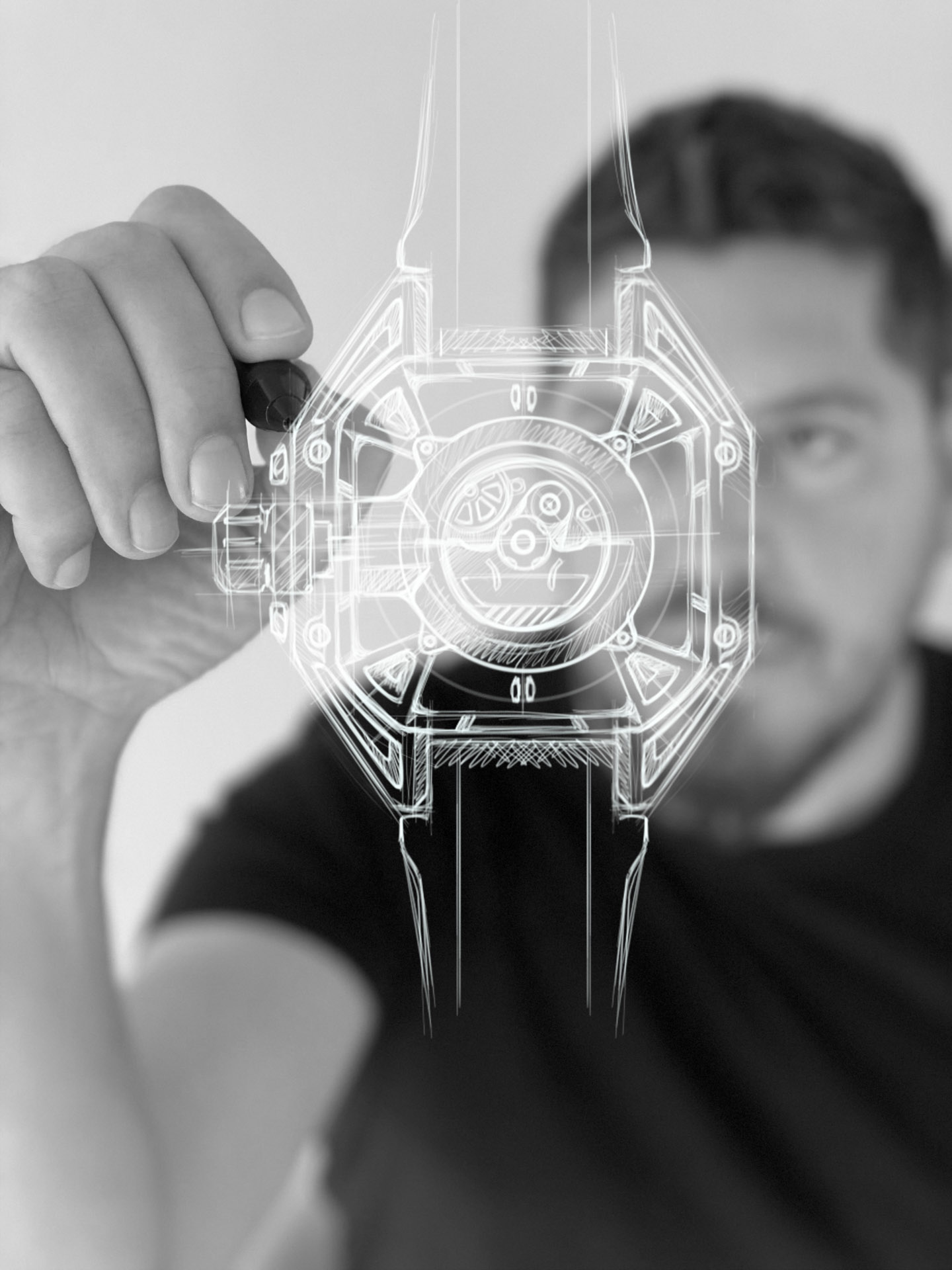 Sponsored post presented on aBlogtoWatch by advertiser
Sponsored post presented on aBlogtoWatch by advertiser
Jason Wilbur is a name known among the wristwatch collector intelligentsia, but until recently, he’s never had his name on a watch. 2020 saw the launch of WILBUR, the most important step in the watch design career of Mr. Wilbur, who is a graduate of the prestigious Art Center College of Design in Pasadena, California, where other contemporary watch designers have also studied. Like a number of wristwatch designers before him, Jason Wilbur intended to specialize in automotive design — which he did, and that resulted in a decade-long career leading Honda’s Advanced Design department, a “Skunkworks-style” arm of Honda’s Research & Development department.
Wilbur left Honda with the opportunity to lead an electric vehicle known as Brave, but starting his own brand had been something persistently on his mind. Wilbur describes the compulsion to start his own brand as having stemmed from his desire to want more creative freedom and to explore a broad variety of product categories. His first major wristwatch design was sold to the American entrepreneur Scott Devon and eventually became the now-ionic Devon Tread 1 watch. The Tread 1 was remarkable not only for its highly spirited design, with the time indicated on moving belts, but also because it was the first truly high-end modern wristwatch with an electronic versus mechanical movement. The Devon Tread watches were not only designed in California but also assembled there.

WILBUR launched with a small collection of limited-edition watches, which, notably, are going to be the simplest products released by the WILBUR brand. To understand the intricate and futuristic design of products like the Wilbur JWA and other 2020 Launch Edition watches, it is crucial to understand both the man and his journey. Let’s now hear from Wilbur himself on the WILBUR brand and how he got here.
aBlogtoWatch: Share some of your most memorable design influences as a child. What are some of your earliest memories of creating things?Jason Wilbur: I grew up in New York but spent a lot of time at my family’s farm in Vermont. That meant I was growing up in two very contrasting environments. My parents expected me to work on the farm, and that meant I was forced to figure out a lot of things on my own. A lot of things break on a farm, so you learn to fix things and make things with what you have on hand. You learn to operate vehicles and machines at a young age. I became obsessed with dirt bikes and go-karts and building tree houses. I would build my own machines, and I became intrigued by everything mechanical, especially things with gears.
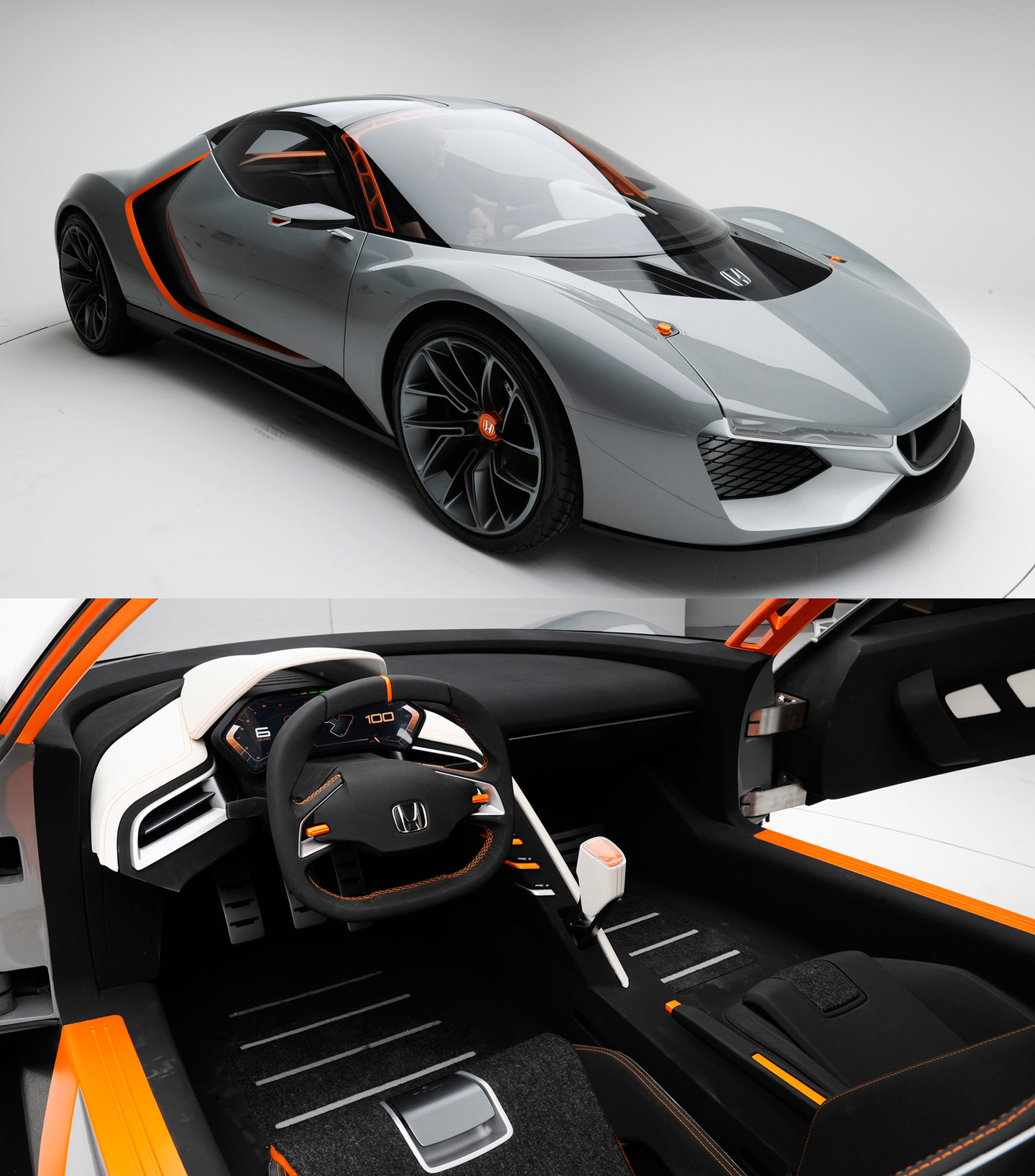
When I was four-years-old, it was clear that I was allergic to following instructions. I always made what I wanted to make. I was always somehow disappointed with the products and things around me. If I used a boat paddle I didn’t like, I’d carve a new boat handle based on my own ideas. If I used a hatchet I didn’t like, I’d make my own hatchet. When I was five, I would draw architectural plans for treehouses, and I would build them from my plans. When I was 10, I designed a logo for a local skateboard shop and it was the first time I was paid for my work. Early in high school, I started a t-shirt brand based on urban/skate style and spent most of my high school career focused on art. I made everything from abstract paintings and clock designs to sculptures made from guitar parts. I spent a high school summer in a New York college art program, and that’s when I really started the more formal training.
My family is full of musicians, artists, and scientists. Because of this, I was immersed in creative culture and unique ways of thinking. I would draw and paint and play guitar from a young age. New York City brought me more exposure to culture. I loved contemporary art that challenged convention, unique architecture, and street art. I would frequently go to galleries and museums in the city, and that was super-inspiring to me.

I knew the artists were the ones who lived in a state of revolution, rather than a state of evolution, and I always knew those were the roots I was born from. Skateboarding and snowboarding culture, and the design and graphics that helped shape that culture, was a huge creative inspiration for me, as well, because skateboarding was “the artist’s sport.” It was both about physical creativity and lifestyle creativity, and the mix of the two elements was powerful to me. Growing up in the ’80s also meant that space exploration and NASA were a big influence because they were driven by huge ideas and hinged on huge that required humans and technology to merge in ways that had never been done before.
When I went to college, I had no specific plan beyond knowing I wanted to create things. I had an interest in physics, engineering, and entrepreneurship, but I knew the route that would allow me the ability to avoid a one-track future would be in design/art. So, the first time I attended college was at RIT in Rochester, New York. It had a well-respected art school, but also a serious engineering school and other fields of study. There, I majored in Fine Art and Graphic Design and eventually started expanding into industrial design, where I would design guitars and other functional products. After my first couple of years, I was entering graphic design competitions and winning awards. This got the attention of graphic design firms, and I landed my first internship. After my internship was over, the company I was interning at convinced me to work for them, so I quit school and worked in graphic design/branding and advertising/art direction for a few years at various companies. I wanted to learn as much as I could about things other than design so I could build a bigger future.
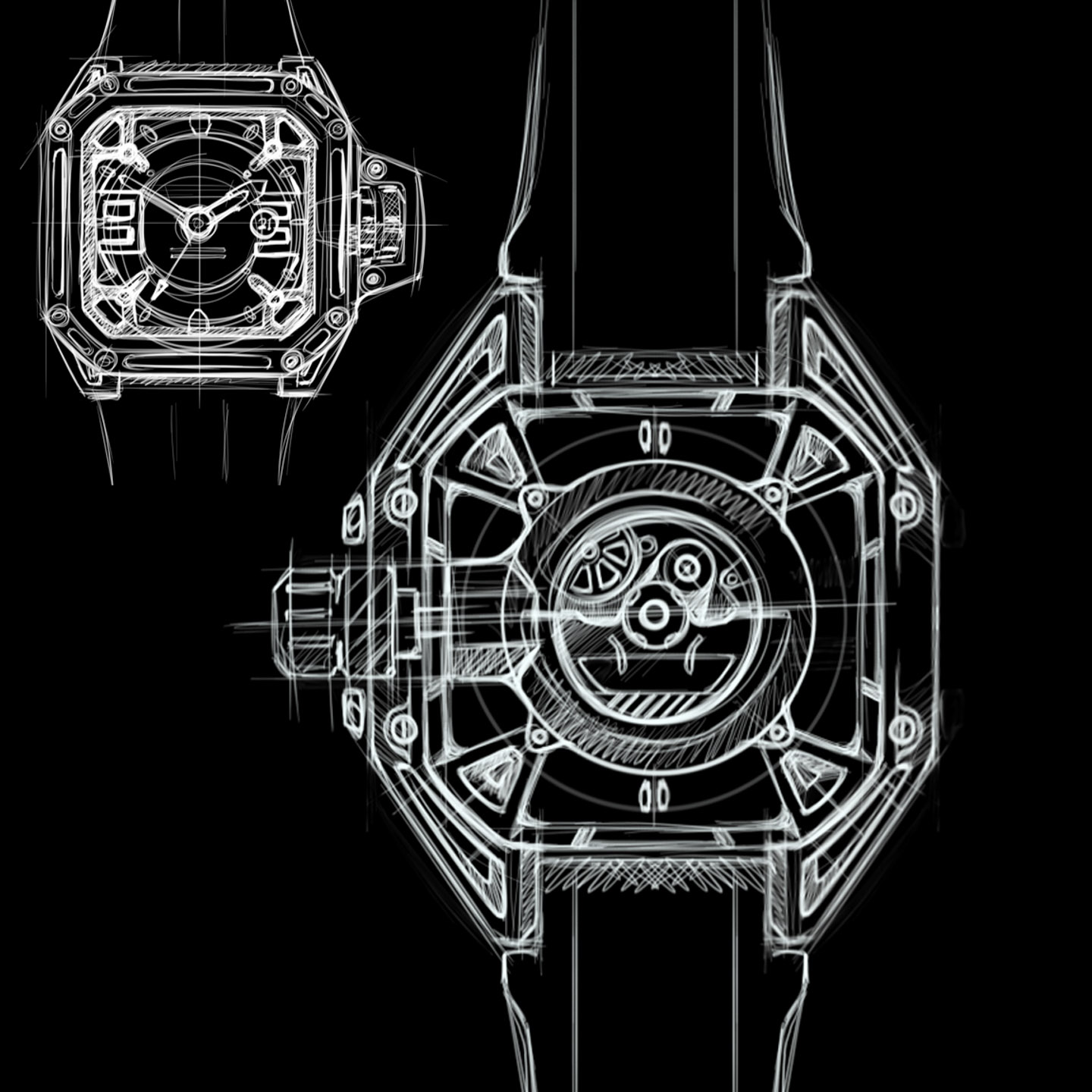
In short, my biggest influences are motors and machines, vehicles and NASA, contemporary and rebellious art and architecture, skateboarding culture, and associated graphic design. Life is a jungle gym to me. I have no singular influence or linear path. I absorb everything around me, and my exploration of my future is based on a collage of all these things.
aBlogtoWatch: What did you initially want to do with a design career?
Jason Wilbur: There was no conscious effort to become a designer. The one thing I knew was that I didn’t want a boring, planned-out life, and I wanted to create exciting and challenging things. In 2000, I decided to go back to school. My love for cars and machines took me to Art Center College of Design in Pasadena (“ACCD”). This regarded California institution was known as the best school in the world for car design. The program was very focused on future concept vehicle design, as well as industrial design, so there was tons of learning about styling, vehicle packaging, material science, CAD modeling, and vehicle/product engineering. I received a scholarship from Porsche, which also allowed me an internship with Porsche Design.
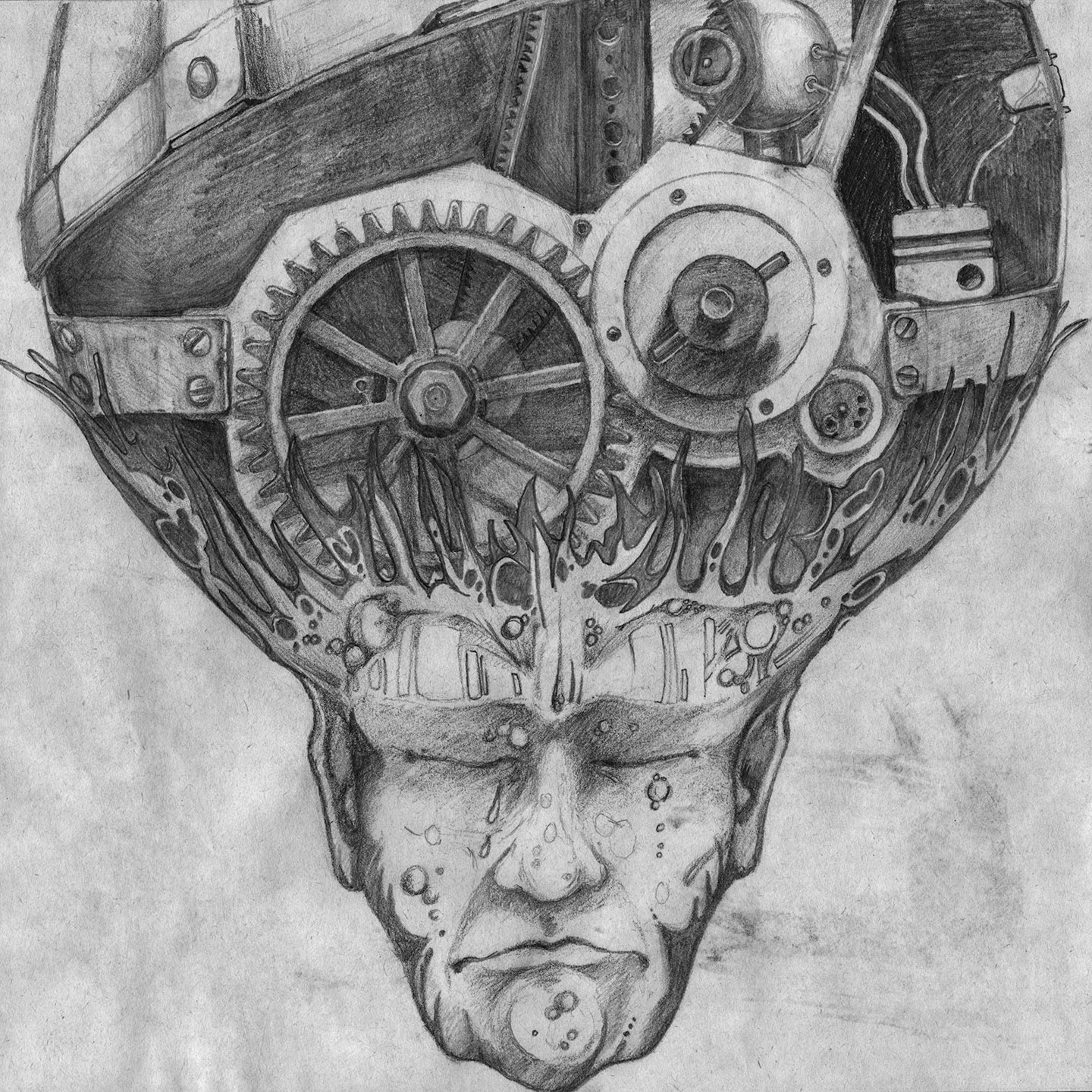
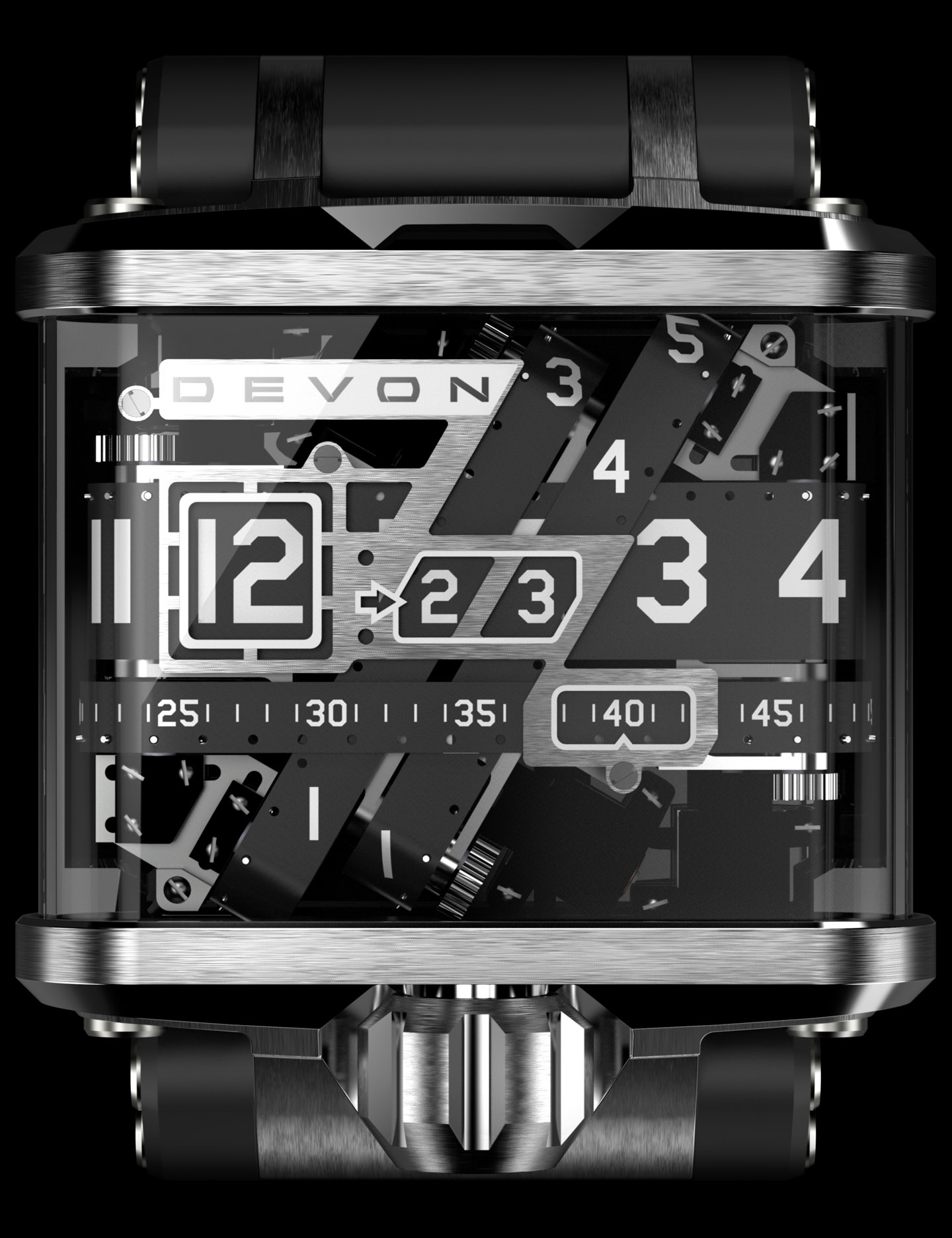
At Porsche, we designed everything from cars to watches to powerboats. After my Porsche internship, I spent a lot of time designing other products at school in addition to cars – this is when I really started to turn up the volume on my watch design.
aBlogtoWatch: Discuss your time in automotive design, along with some key career highlights and achievements.
Jason Wilbur: I accepted a car design job with Honda R&D directly out of ACCD. I worked for Honda for over 10 years while also consulting on industrial design projects on the side, creating my artwork, designing watches, and even teaching car design at ACCD, periodically. At Honda, I started off as an exterior designer working on both production and concept cars.
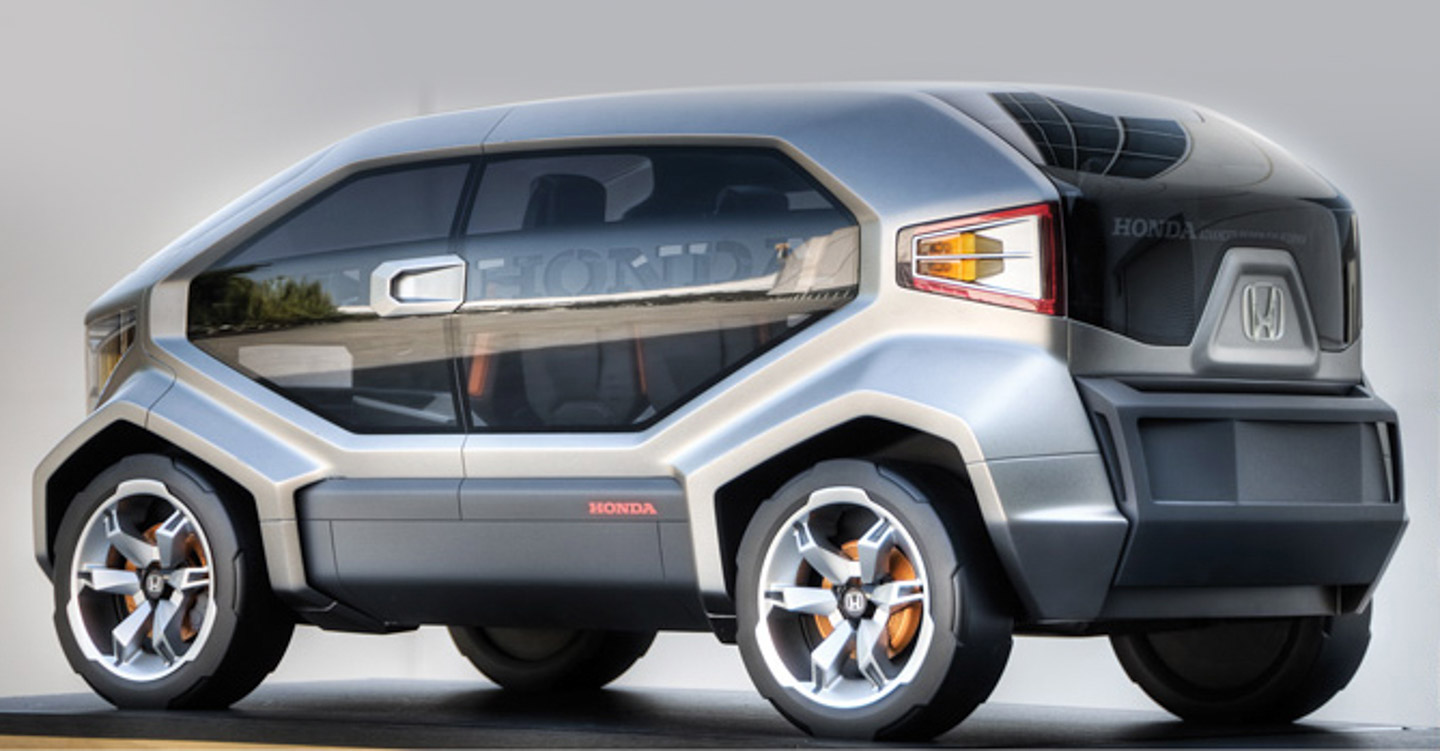
I was the lead designer on several key Honda cars, including the Honda FC Sport, The Honda Sport concept, and the NueV ( electric urban vehicle), and created over a dozen internal future vehicle concepts. Eventually, I became the head of the Honda Advanced Design Studio. I was instrumental in building the new advanced design team, as well as the new studio in downtown Los Angeles. The studio was in charge of all future vehicle design and R&D activity for Honda in North America. This role allowed me to work on future-focused vehicle concepts and collaborations with other Honda divisions, such as Honda Racing, Honda motorcycles, and Honda marine products — and I used the studio as a platform to nurture design talent, explore future technologies and vehicles, and educate the industry and public on all things “future transportation and advanced design.” My time in charge of Honda Advanced Design allowed me to merge all of my skills — creative, technical, and business — into one focused effort.
I left HONDA in 2015, as I co-founded a new electric vehicle company called Brave Labs, Inc. After funding, I took on the role of CEO. We developed electric scooters (the Brave One Scooter), motorcycles, and urban EV technologies and drive trains. I exited Brave Labs and spent the last few years on automotive and industrial design consulting while finalizing the foundation to finally launch the WILBUR brand. All of these experiences in different facets of design informed my watch designs. Watches, over the years of creating them, became my escape. I was always creating watch concepts from my early days of college. As my technological, engineering, and design skills developed and matured, my watch designs did as well.

aBlogtoWatch: How did you educate yourself on how to design a wristwatch, and how has that understanding of timepiece design changed over time?
Jason Wilbur: I learned more about watch design from breaking the rules than following them. My approach quickly moved further from the traditional “ways to design a watch” and more toward my experience with advanced vehicle design methods to inform my watch designs.
Over time, my approach to watch design became more about creating a modern three-dimensional sculpture that happens to tell time, rather than a “clock-on-a-wrist”/tool for time-telling. It became more important to take a more holistic approach to the watch and start the exploration in 3D as early in the process as possible. I always start a watch project with sketches to define the overall theme, but exploring and refining the design in 3D allowed me to a) skip the misinterpretation that happens when sketches are handed off to someone else to create the design in 3D, and b) put all the details and elements dance together, come to life, and find their final place as one cohesive sculpture. This allows for a more holistic approach and a more powerful and refined design.
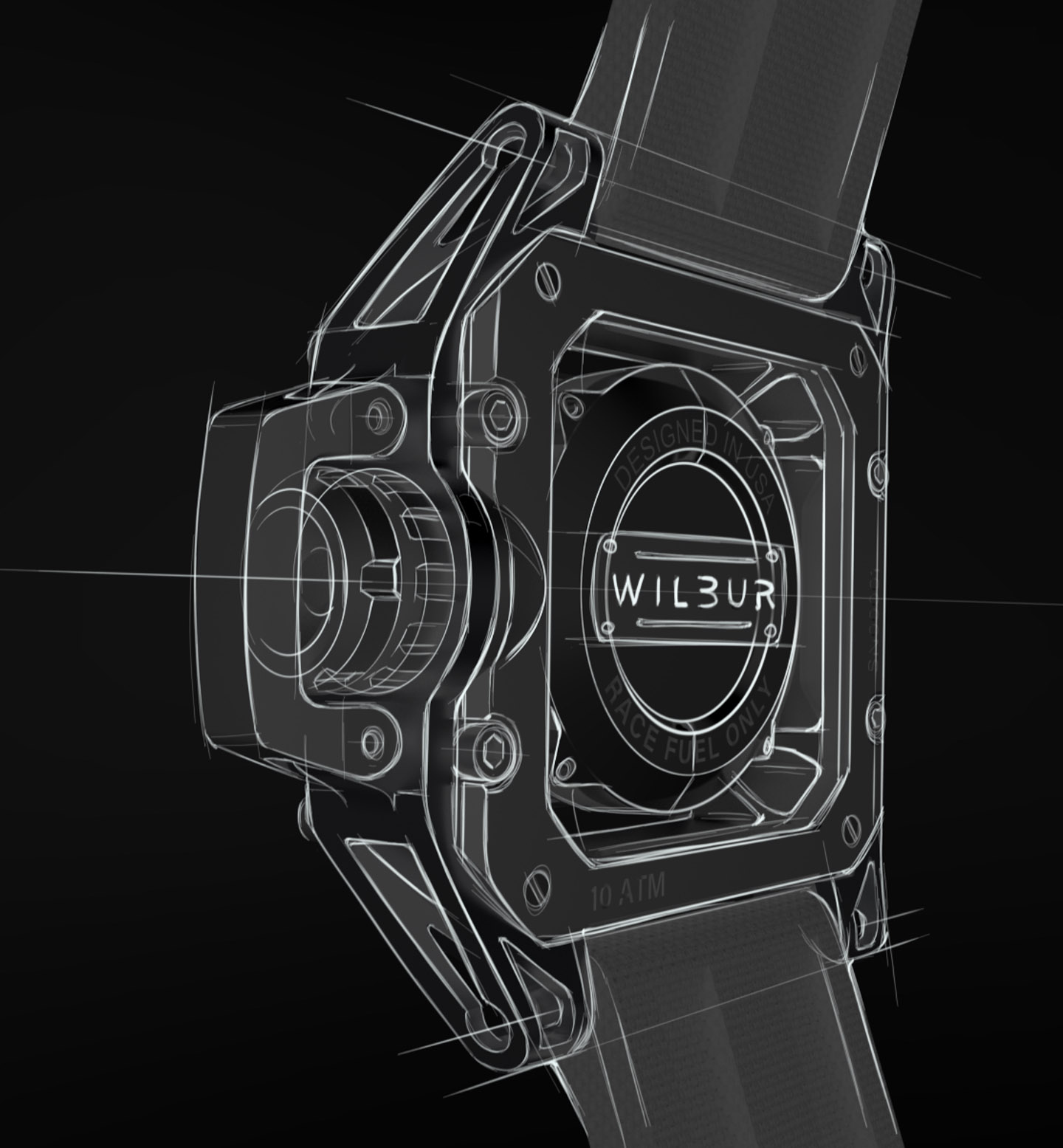
Often, when I would show a new watch design to a traditional watchmaker or engineer, they would tell me it can’t be done, or it breaks too many rules. The more I was able to build my designs in 3D and create prototypes myself, the easier It was for me to “prove out” designs, and the harder it was for people to tell me it was impossible.
aBlogtoWatch: What types of popularity, opportunity, and experiences did your involvement with Devon afford you?
Jason Wilbur: The design concept for the watch that would eventually become the Devon Tread 1 was pretty much complete when I met Devon. Although I envisioned it being the first production watch for the WILBUR brand, I knew it couldn’t be produced without some serious funding and support. Devon brought that funding and support. The opportunity allowed me to bring one of my watch dreams to life and allowed me to produce it exactly the way I wanted to, putting together a team of aerospace engineers rather than traditional watchmakers, and building it in the USA.
I broke a lot of rules when I created that watch – and broke even more when it was released. The release of the Tread 1 really made waves in the industry, and it helped showcase to the industry that I was serious. It was nominated for a GPHG award and that stirred the pot quite a bit. Coming up with crazy ideas is one thing, being able to produce them in real life and at scale is another. My experience with this project proved that I could pull it off. This opened a lot of doors for me in the industry as well as outside the industry, and, more importantly, I built a lot of amazing relationships with people who support me to this day.
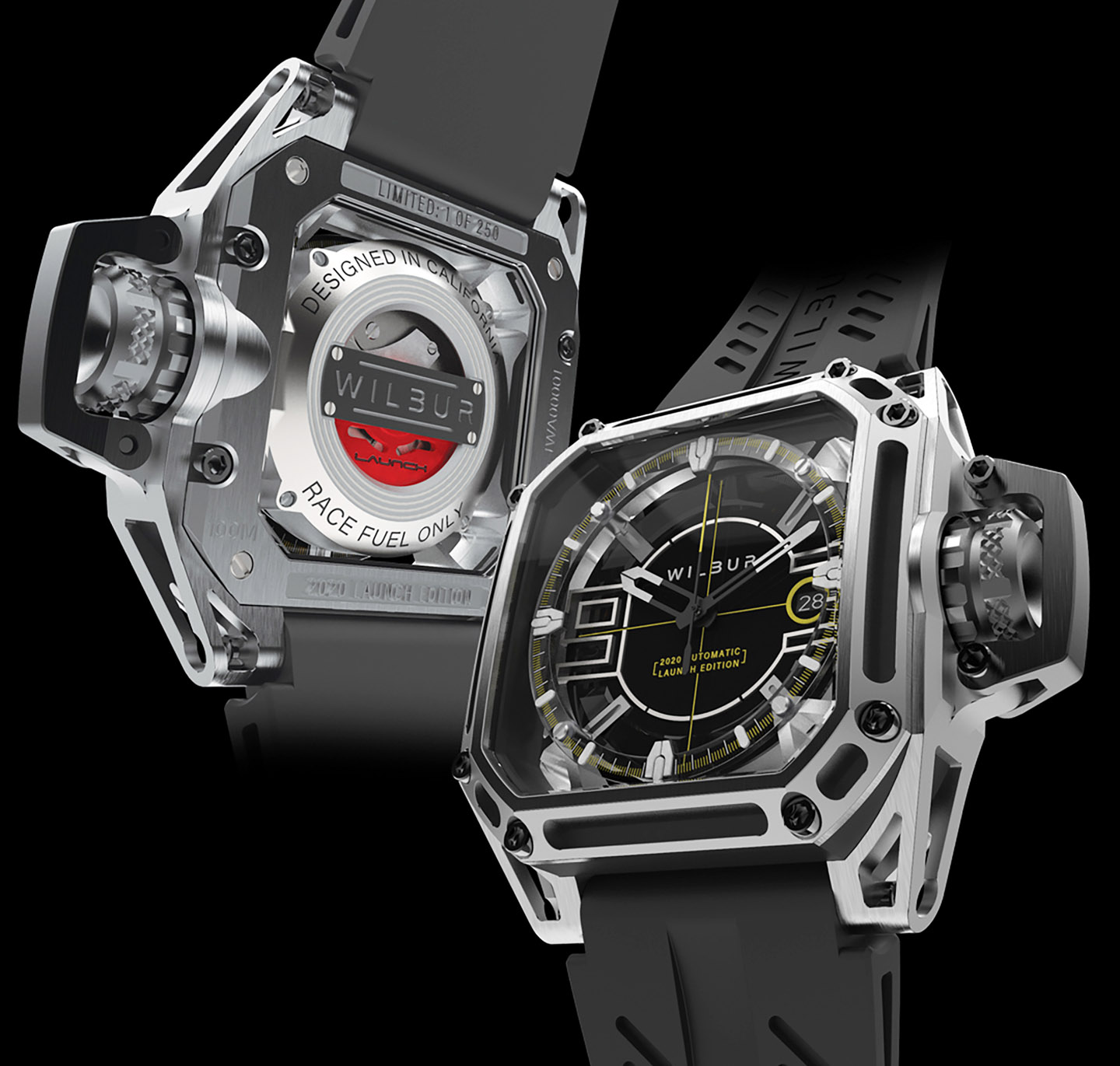
aBlogtoWatch: What made you want to start your own eponymous brand? Out of all the things you could have produced first, why a wristwatch?
Jason Wilbur: I spent a large portion of my career at companies that made product decisions based on what competitors do, based on information gathered in focus groups and generally making the same things other brands make – over and over. True risk-taking and bold design expression are largely missing from the equation.
I’m here to flip the script. I built my brand to bring excitement to the few who truly appreciate it, not to please the masses. This brand is not for everyone. It’s only for the brave ones. I look at creating watches as simply an extension of my artistic expression. And my brand is simply an extension of me. I didn’t choose to start with watches, watches chose me. I always wanted to create a rebellious yet serious brand that brought together all of the creative worlds I have immersed myself in over my career and creating watches allows for just that.
More so, designers love watches because designers love creating expressive things that come to life. A watch is a dream in this sense – especially now. Now that watches aren’t simply a tool to tell time, the options for reimagining what a watch can be are vast. Creating a watch requires creating a living thing with personality. It’s a dance between design, mechanical engineering, material science, and advanced manufacturing and finishing. Balancing these things is a big challenge, but manufacturing and constantly executing exceptional product quality is by far the biggest challenge.
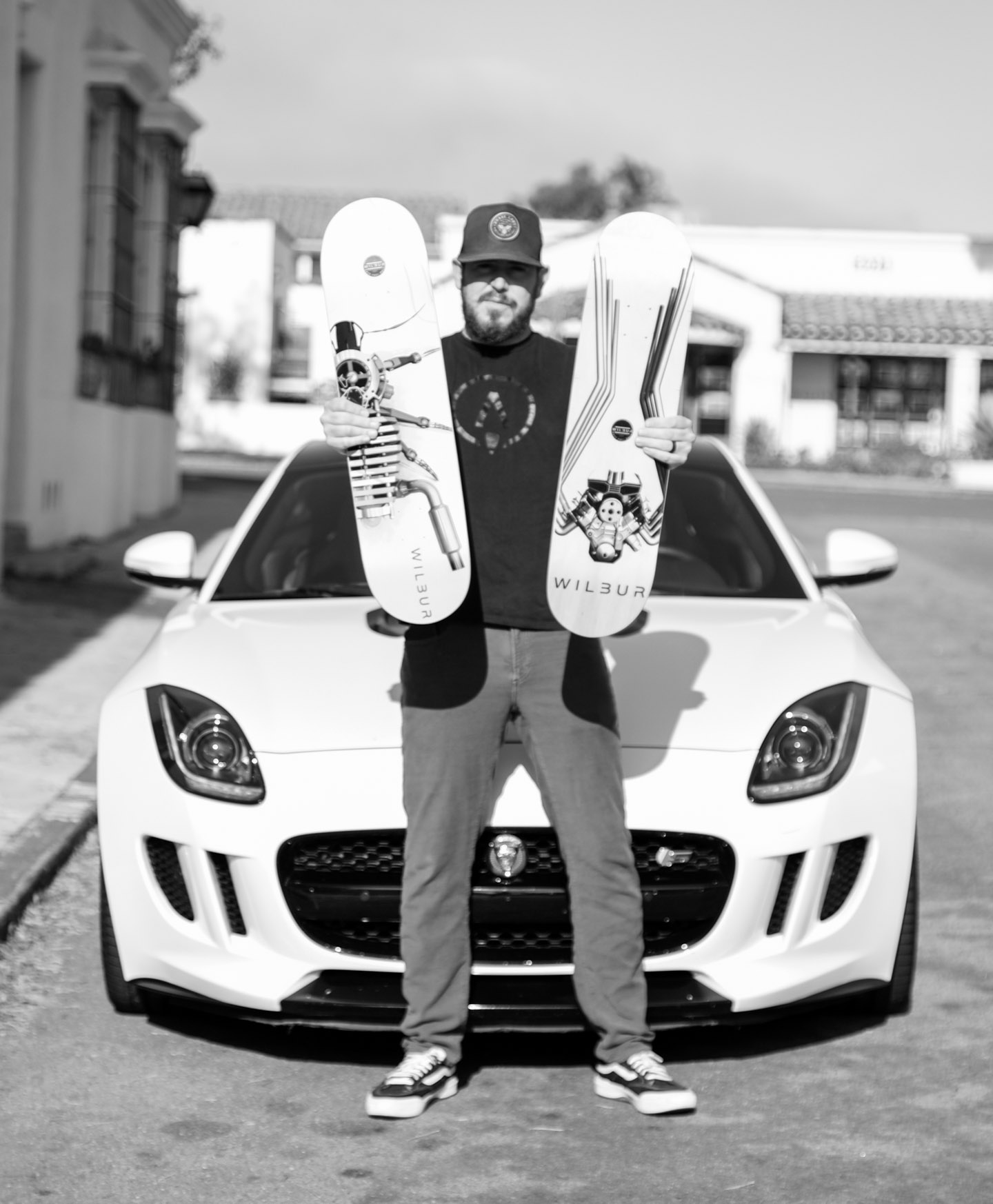 My vision for the WILBUR brand was to create an American design-focused brand that takes advanced automotive design principles and applies that knowledge and creative risk talking to watches and future products and creates emotionally and technically superior sculpture. Since I personally design everything I produce, I put my name on the brand, the same way I sign my other artwork.
My vision for the WILBUR brand was to create an American design-focused brand that takes advanced automotive design principles and applies that knowledge and creative risk talking to watches and future products and creates emotionally and technically superior sculpture. Since I personally design everything I produce, I put my name on the brand, the same way I sign my other artwork.
aBlogtoWatch: Explain what you are trying to do with the 2020 Automatic Launch Edition (ALE) watches. What purpose were you trying to serve? What theme were you trying to express?
Jason Wilbur: The Launch Edition is meant to be a pure expression of what the brand character is all about. It’s the “simplest” watch we will make and it will be limited to 250 pieces each. It serves as the foundation for the brand going forward. The design is architectural and chassis-like with multiple layers, transparency, and skeletonization that brings the powerful and modern automotive/motor theme to the surface. It is truly a watch inspired by “dreams of machines.” I used an ultra-simple workhorse movement to signify the beginning of the brand. This is a nod to the respect I have for old-school watchmaking while also aiming for the future with a watch that doesn’t “follow all the rules.”
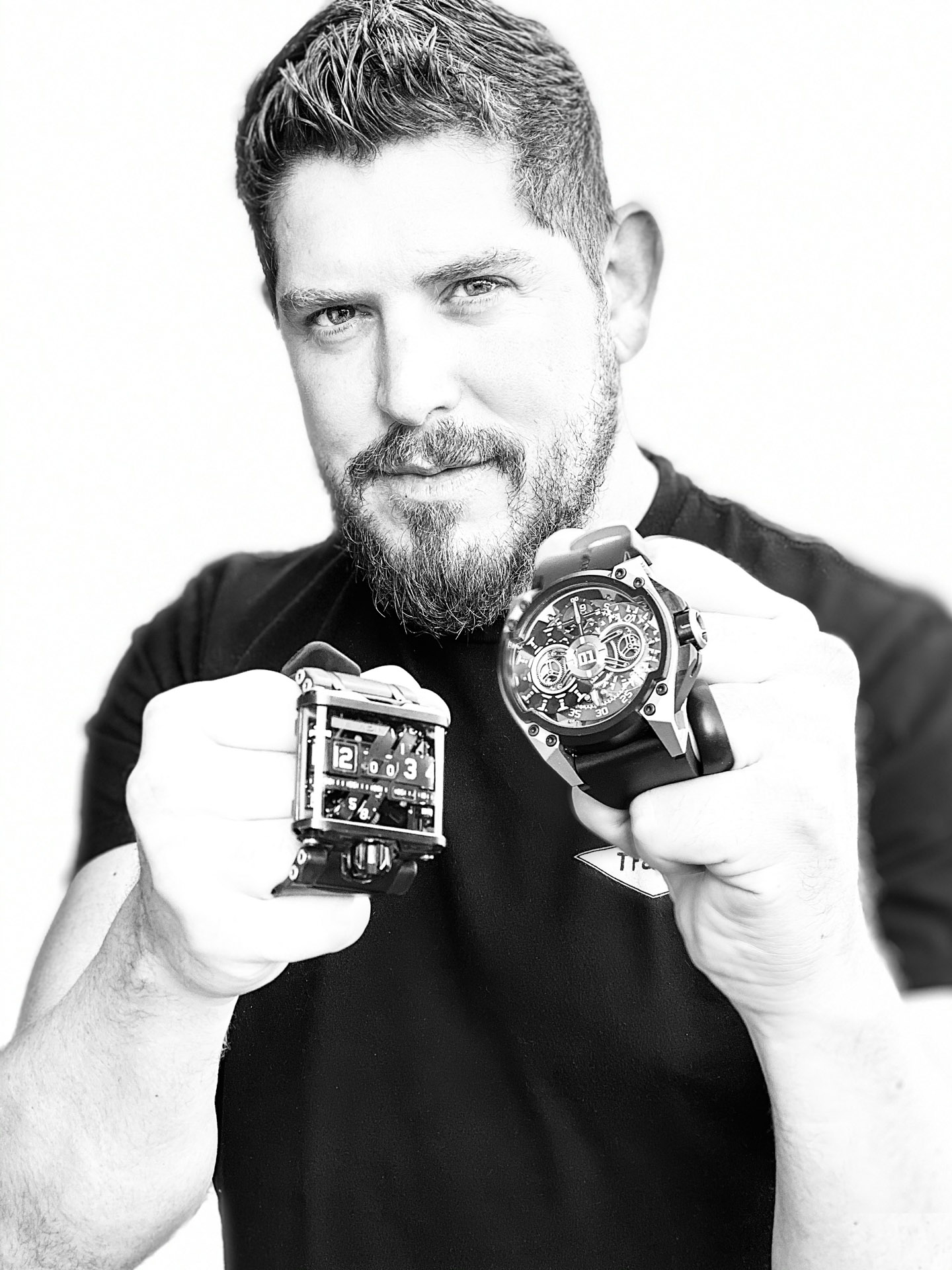
aBlogtoWatch: What are some of the most challenging manufacturing solutions you needed to develop for the production of the ALE watches? Ones that will impress consumers to hear about.
Jason Wilbur: First would be the suspended chassis that holds the multiple dials and movement in place is a complex three-dimensional part that required multiple advanced manufacturing methods to create using three different processes before finishing. This part holds all of the internal components in place. This required amazingly tight tolerances to pull off.
Second is that the case is water-resistant to 100 meters. To create a case of this shape, with a curved top crystal and multiple interlocking and skeletonized parts that would still allow for 100m water resistance required a lot of machining time and no room for error.
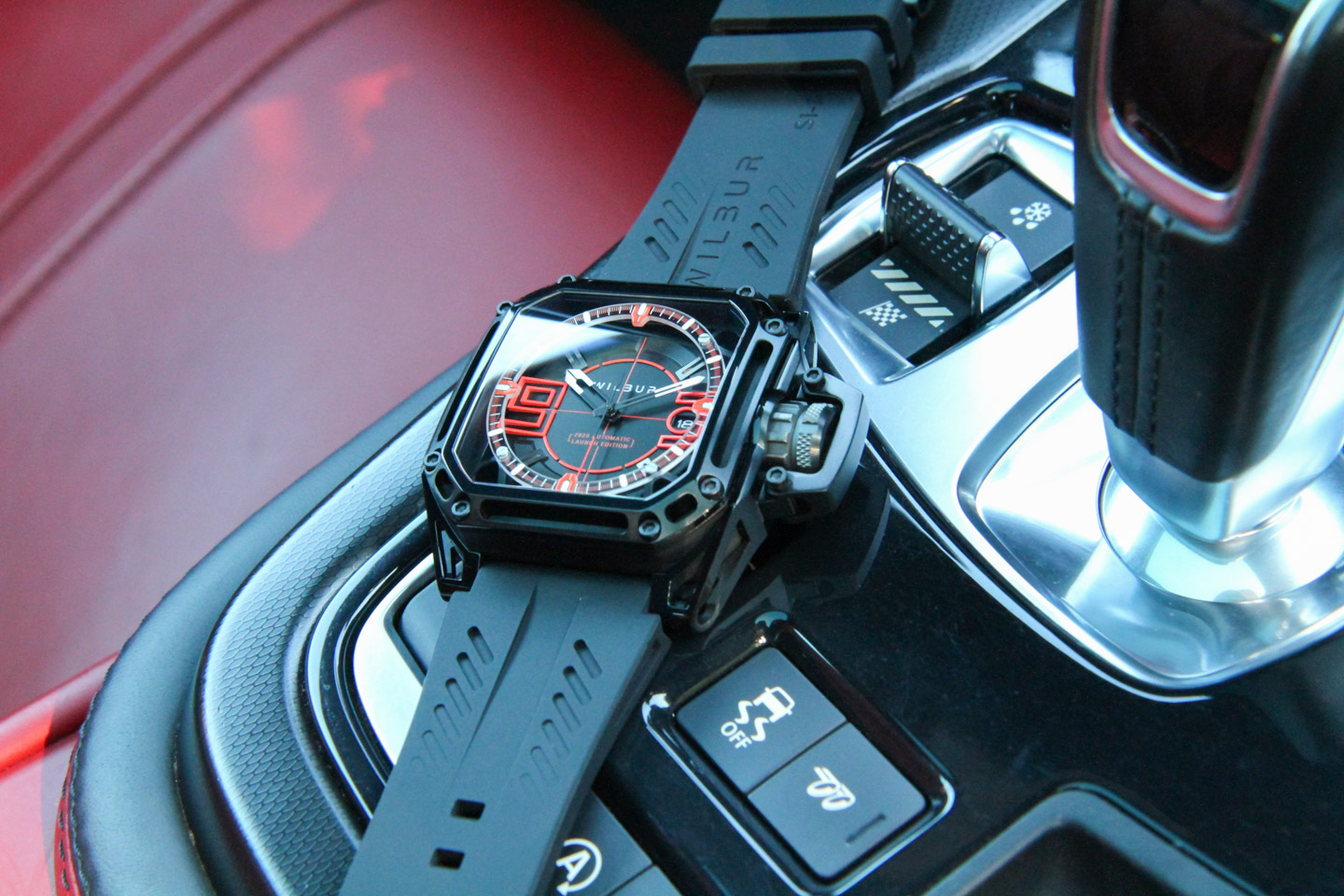
aBlogtoWatch: What do you want people who view a WILBUR watch on someone’s wrist to think about the wearer?
Jason Wilbur: The design of the ALE says, “I love machines. I love unique design and I’m part of a special club of people who aren’t swayed by ‘the cult of deja vu’ (i.e., drawn to familiar-looking things).” I wear these watches because I want something special, rare, and modern – not because everyone else has one.
aBlogtoWatch: What would you say to your biggest critics who ask the question “what is your strongest reason why I should admire this watch?”
Jason Wilbur: If you have to ask – it’s not for you. This watch challenges the norm, makes a big statement, and is executed with love usually reserved for pieces 20 times the price.
Learn more or order at the WILBUR watches website here.
ponsored Posts are a form of advertising that allows sponsors to share useful news, messages, and offers to aBlogtoWatch readers in a way traditional display advertising is often not best suited to. All Sponsored Posts are subject to editorial guidelines with the intent that they offer readers useful news, promotions, or stories. The viewpoints and opinions expressed in Sponsored Posts are those of the advertiser and not necessarily those of aBlogtoWatch or its writers.

